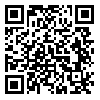BibTeX | RIS | EndNote | Medlars | ProCite | Reference Manager | RefWorks
Send citation to:
URL: http://jhosp.tums.ac.ir/article-1-5080-en.html
2- School of Public Health ,Research Deputy of Knowledge Utilization Research Center, , School of Public Health, University of Medical Sciences, Tehran, Iran ,
3- Health Deputy, , Tehran University of Medical Sciences
4- Tehran University of Medical Sciences, Tehran, Iran
5- School of Public Health, Tehran University of Medical Sciences, Tehran, Iran
Background: Achieving equitable financial contribution and removing the risk of households' exposure to catastrophic expenditures are the most important challenges for health systems all over the world. This study aimes to measure Iranian households' exposure to catastrophic health care expenditures and surveying the factors affecting this expenditure, based on the World Health Organization and the World Bank approach.
Materials & Methods: Sectional data of the World Health Survey in Iran in 2001 has been analyzed. This survey covered 10300 urban and rural households across the country. The catastrophic expenditure has been calculated based on the ability to pay in the thresholds of 40, 50, and 60 percent and the income at the threshold of 20 percent. Logistic regression model was used to examine factors influencing catastrophic health expenditures.
Results: The proportion of families confronting catastrophic health expenditures was estimated at 9-15 per cent. Facing catastrophic expenditures showed a statistically significant relationship with variables such as having a family member suffering from a chronic disease, family`s financial condition, and living in rural areas regardless of the thresholds used. The insurance coverage showed a statistically significant relationship with exposure of catastrophic health expenditure just in case it was measured using the 40% threshold.
Conclusion: Political interventions and policies of the government such as implementing fee exemptions for certain target groups, designing benefits packages, extending population coverage through prepayment mechanisms and protecting the poor and disadvantaged groups can protect households from experiencing catastrophic health expenditures.
Received: 2012/03/13 | Accepted: 2012/06/9 | Published: 2013/08/30
| Rights and permissions | |
 |
This work is licensed under a Creative Commons Attribution-NonCommercial 4.0 International License. |





